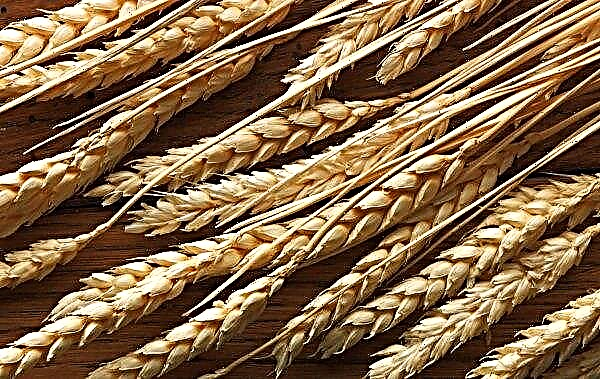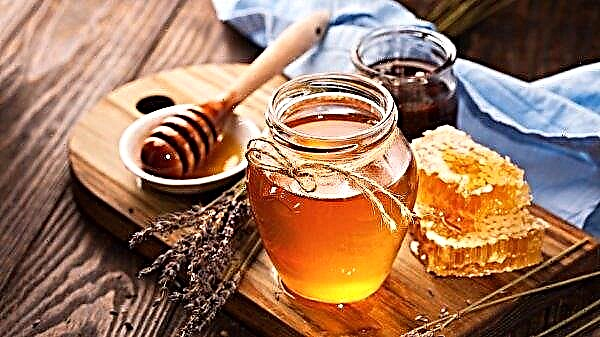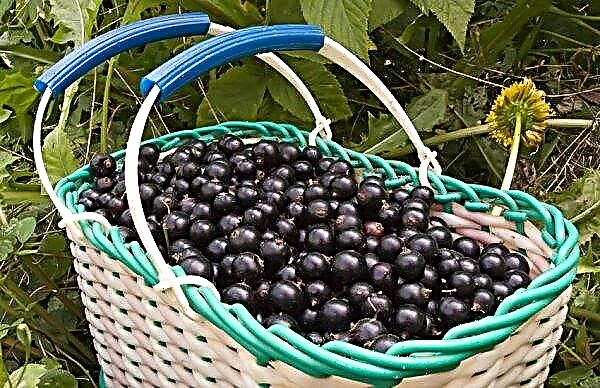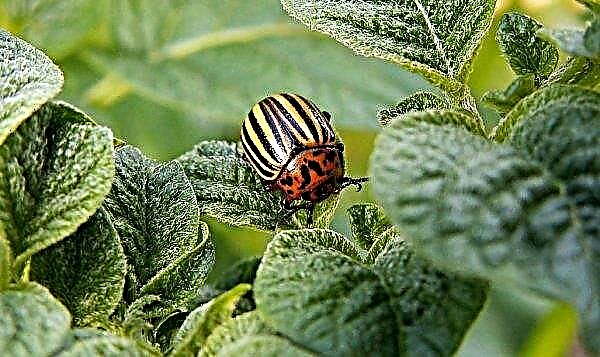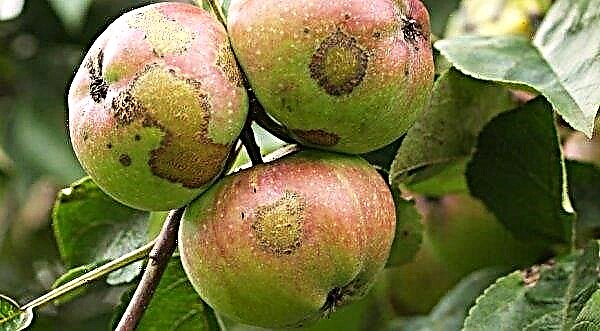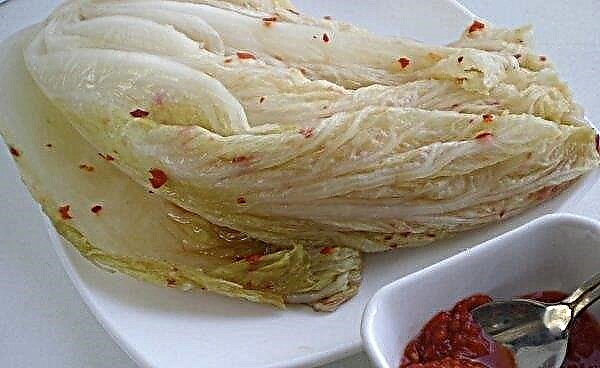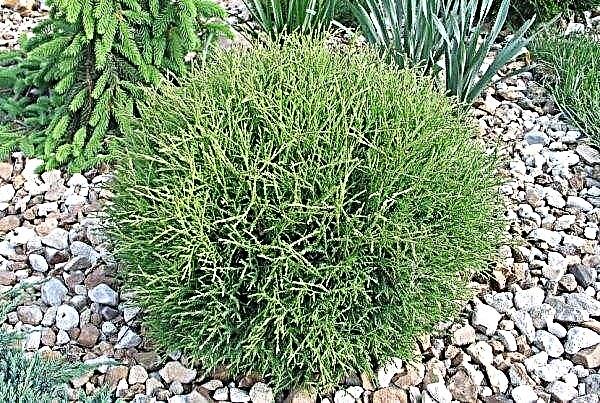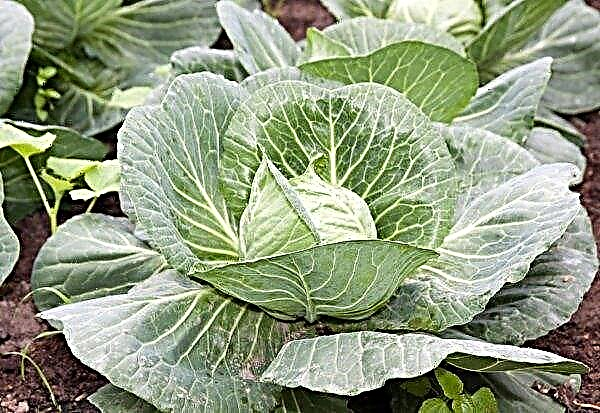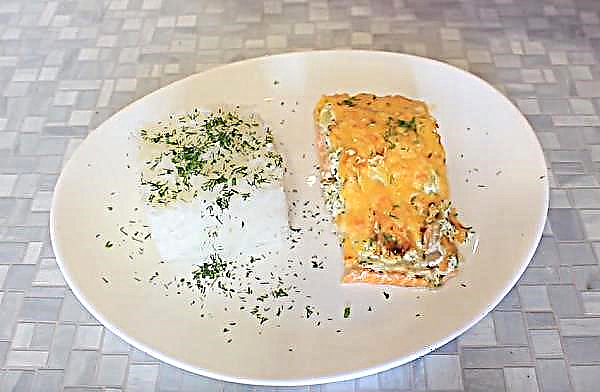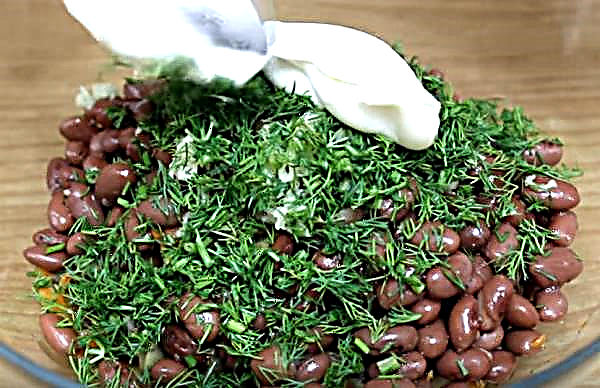To increase the survival of chickens, to provide good egg and meat characteristics in the future, they must be properly fed. At different ages, they form different organs and systems, this should be taken into account when building a nutritional scheme. In this article, we will get acquainted with the recommendations for feeding a bird, depending on age and direction.
How and how to feed chickens
When organizing a feeding scheme for chickens, take into account the following points:
- Feeding troughs should not be too high.
- On feeders and drinking bowls there must be devices that do not allow the bird to climb inside.
- The water in the drinkers cannot be cold, you need to replace the water and clean the drinker several times a day.
- Pouring food into the feeders, do not reach half, otherwise the chickens will shake it.
- Collect the remains of wet food after 40 minutes the field of their delivery and wash the feeder with hot water with soap or formalin.
- After feeding, check the craws of the babies, the bird with empty goiters should be fed separately.
- Grass for feeding must be freshly picked, otherwise it can lead to poisoning.
- Feed at the same time.
 The diet of small chickens depends on their age - the smaller they are, the more tender the food should be. Changes in feeding are associated with such age periods in their life:
The diet of small chickens depends on their age - the smaller they are, the more tender the food should be. Changes in feeding are associated with such age periods in their life:- 1 day
- Week 1;
- 2 weeks;
- 1 month;
- 2 months from birth.
Daily allowance
Until recently, it was believed that one-day-old chickens did not need to be fed, they only need the yolk from the egg in which they grew. However, now the opinion has changed dramatically, many believe that if children are given food immediately after they have dried, this will increase their survival rate.
The point of view regarding the first meal has also changed. It is now claimed that boiled chicken yolk cannot serve as the first meal of hatched chickens, as this:
- too greasy food for them;
- does not stimulate the digestive tract due to its soft structure;
- it’s more difficult to peck a grown bird to peck grain because of digestive problems.
 You can feed the bird with boiled eggs, they are a valuable source of protein and vitamins, but introduce them later. An ideal variant of the first feed would be small cereal from corn, scattered on a hard surface. So the kids will learn not only to peck, but also to rummage.
You can feed the bird with boiled eggs, they are a valuable source of protein and vitamins, but introduce them later. An ideal variant of the first feed would be small cereal from corn, scattered on a hard surface. So the kids will learn not only to peck, but also to rummage.After a day, you can enter in the menu:
- semolina;
- crushed wheat grains;
- finely ground oatmeal (or fine barley groats);
- millet.
Important! All cereals are given to chickens in dry form, steamed can clog nostrils, goiter or intestines, as a result, the babies will die.
Video: Feeding and feeding chickens in the early days of life
The sequence of introduction into the diet of chickens of various types of feed:
| Day of life | Type of feed |
| 1 | Small corn groats, kefir or yogurt. |
| 2 | Other types of crushed grain, boiled eggs. |
| 3 | Cottage cheese, chopped nettles, alfalfa, plantain, clover, woodlice, dandelion, grated carrots. |
| 4 | Compound feed for chickens. |
| 5 | Ground green onion feathers. |
| 6 | Fishmeal, mixes steamed with fish stock. |
On the first day, babies are fed with an interval of 2 hours, without interruption at night, gradually increasing the interval. For 1 representative of the chicken family, about 10 g of feed per day is consumed.
Weekly
The list of foods allowed to eat weekly chickens includes:
- corn;
- barley;
- oats;
- wheat;
- greenery;
- cottage cheese and kefir;
- fish and meat meal;
- vegetables;
- mineral feed.
 The sequence of introduction into the diet of weekly chickens of various types of feed:
The sequence of introduction into the diet of weekly chickens of various types of feed:| Day of life | Type of feed |
| 7 | Boiled fish waste. |
| 8 | Mixers on lean meat broth, boiled ground meat waste. |
| 10 | Boiled crushed potatoes, chalk, chopped shells, sand, fine gravel. |
| 11 | Grated pumpkin, zucchini, beet tops, other vegetables. |
At this age, increase the feeding interval to 3.5-4 hours, continue to chop the feed. Eggs from the diet can be removed. One individual gives about 12 g of food per day.
Two weeks
Starting from the 11th day, refuse night feedings, the interval between meals will be 4-5 hours. The degree of grinding products will not be so strong, pay attention to the variety of menus, do not forget about green and mineral feed, enter salt. To one chick, give about 20 g of feed per day, gradually increasing to 55 g by the end of the month.
Monthly
When the offspring is 1 month old, they can be allowed to walk outside. There they will be able to provide themselves with sand, gravel, grass. If you add green feed to the feeder, you can no longer chop them, grind the grain to large fractions for up to 1.5 months, then you can feed the whole.
Chicks of this age need to add yeast and do not forget about a small amount of salt. Of great importance for high productivity in the future are vitamins and mineral feed, which is poured into individual feeders. You can feed 4 times a day, giving from 60 to 100 g of feed per 1 individual per day.Important! After 1 month, the chicken menu should contain at least 1/3 of the green feed.
Two month
When the chicks reach two months of age, they are fed 3 times a day, gradually switching to 2 meals a day and feeding from 115 g of food per day. Grain can be sprinkled in unmilled form. Dry food at this age is replaced with wet mash. The diet may correspond to an adult chicken.
Feeding rates: tables
Egg and meat directions require different approaches to feeding chickens, as they focus on different results, requiring different nutrients. Let's consider them in more detail.
Egg chickens
The norms of products per day for egg chickens, depending on age:
| How many days is the chicken | The number of products, g |
| Boiled egg | |
| Until 3 | 2 |
| To 10 | 2 |
| Older | Exclude from the diet |
| Low fat cottage cheese | |
| Until 3 | 1 |
| To 10 | 1,5 |
| Up to 20 | 2 |
| Up to 30 | 3 |
| Up to 40 | 3 |
| Up to 50 | 4 |
| Up to 60 | 5 |
| Reverse or low-fat kefir | |
| Until 3 | 5 |
| To 10 | 8 |
| Up to 20 | 15 |
| Up to 30 | 20 |
| Up to 40 | 36 |
| Up to 50 | 25 |
| Up to 60 | 25 |
| Crushed grain | |
| Until 3 | 5 |
| To 10 | 9 |
| Up to 20 | 15 |
| Up to 30 | 23 |
| Up to 40 | 32 |
| Up to 50 | 40 |
| Up to 60 | 50 |
| Flaxseed, sunflower, soybean, rapeseed cake or meal | |
| Until 3 | - |
| To 10 | 0,2 |
| Up to 20 | 0,5 |
| Up to 30 | 0,6 |
| Up to 40 | 1,2 |
| Up to 50 | 1,5 |
| Up to 60 | 2 |
| Flour of fish, meat, bones | |
| Until 3 | - |
| To 10 | - |
| Up to 20 | 1 |
| Up to 30 | 1,5 |
| Up to 40 | 2,5 |
| Up to 50 | 3,5 |
| Up to 60 | 4 |
| Grass, leaves, carrots | |
| Until 3 | 1 |
| To 10 | 3 |
| Up to 20 | 7 |
| Up to 30 | 10 |
| Up to 40 | 15 |
| Up to 50 | 17 |
| Up to 60 | 20 |
| Potatoes and other vegetables | |
| To 10 | Not included in the diet |
| Up to 20 | 5 |
| Up to 30 | 11 |
| Up to 40 | 20 |
| Up to 50 | 32 |
| Up to 60 | 40 |
| Crushed shells, chalk, other minerals | |
| Until 3 | Not included in the diet |
| To 10 | 0,4 |
| Up to 20 | 0,7 |
| Up to 30 | 1 |
| Up to 40 | 2 |
| Up to 50 | 2 |
| Up to 60 | 2 |
| Salt | |
| Up to 20 | Not included in the diet |
| Up to 30 | 0,05 |
| Up to 40 | 0,05 |
| Up to 50 | 0,08 |
| Up to 60 | 0,1 |
Calorie nutrition of poultry of egg breeds should not be high, otherwise there will be problems with egg production.
Did you know? The dish “Chicken of tobacco” is more correctly called “Chicken of tapaka” by the name of the Georgian frying pan for its preparation - tapaka.
Broiler chickens
When feeding broilers, they are guided by the quantity and quality of meat, so the number of products is different.
The norms of products per day for chicken meat breeds, depending on age:
| How many days is the chicken | The number of products, g |
| Granulated corn | |
| Up to 5 | 40 |
| Up to 30 | 30 |
| Over 30 | 20 |
| Crushed barley | |
| Up to 5 | Not included in the diet |
| Up to 30 | 10 |
| Over 30 | 20 |
| Granulated wheat | |
| Up to 5 | 39 |
| Up to 30 | 24 |
| Over 30 | 36 |
| Flaxseed, sunflower, soybean, rapeseed meal | |
| Up to 5 | 11 |
| Over 5 | Exclude from the diet |
| Flaxseed, sunflower, soy, rapeseed cake | |
| Up to 5 | Not included in the diet |
| Up to 30 | 16 |
| Over 30 | 13 |
| Skimmed milk powder | |
| Up to 5 | 10 |
| Up to 30 | 2 |
| Over 30 | Exclude from the diet |
| Meat and bone meal | |
| Up to 5 | Not included in the diet |
| Up to 30 | 3 |
| Over 30 | 3 |
| Fish flour | |
| Up to 5 | Not included in the diet |
| Up to 30 | 6 |
| Over 30 | 3 |
| Herbal flour | |
| Up to 5 | Not included in the diet |
| Up to 30 | 2 |
| Over 30 | 3 |
| Yeast | |
| Up to 20 | Not included in the diet |
| Up to 30 | 3 |
| Over 30 | 6 |
| a piece of chalk | |
| Up to 5 | Not included in the diet |
| Up to 30 | 1 |
| Over 30 | 1,6 |
| Salt | |
| Up to 30 | Not included in the diet |
| Over 30 | 0,4 |
In order for chicken meat productivity to be on top, most of the products for chickens are those that enrich with protein.
Did you know? In 1806, one housewife from England had eggs flying with the words “Jesus is coming”, creating a panic about the imminent end of the world. It turned out that the inscription on the laid eggs was made by the hostess herself, after which she put them inside the chicken.
What can not be fed
The list of prohibited products for chicken offspring includes:
- stale foods;
- withered greens;
- soured feed;
- a large number of beets;
- excess salt intake;
- a large number of eggs;
- wet mixers up to 2 months;
- poorly ground grain up to 1.5 months;
- most flour products;
- wet food that was not eaten from the last time;
- compound feed for broilers to egg chickens;
- raw meat and fish;
- fresh milk;
- earthworms;
- chocolate and other sweets;
- celandine;
- ragweed;
- fresh bread;
- salted fish and other salted products;
- citrus.

Thus, chickens require a special approach to building a diet, this applies not only to the period of life, but also to the breeds of birds. We should not forget that in nutrition it is important not only how to feed, but how and in what quantity. Proper feeding will reduce mortality and increase return on investment in feed.

